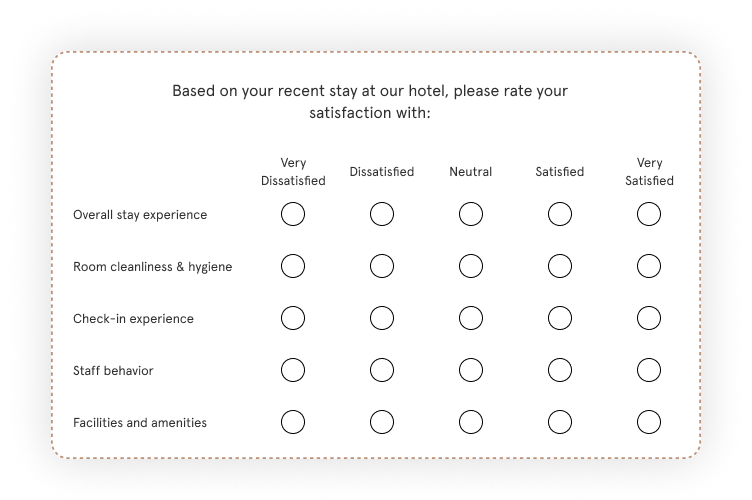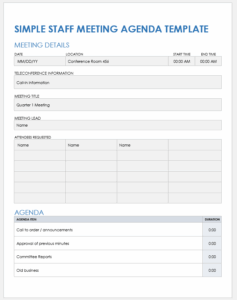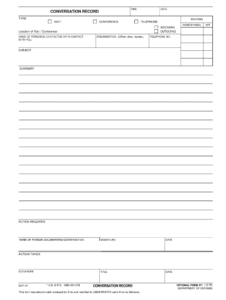Understanding your clients is at the heart of any successful business. It’s not enough to simply provide a service; you need to know how well you’re meeting their expectations, where you’re excelling, and most importantly, where there’s room for improvement. A well-designed client service satisfaction survey is your direct line to this invaluable feedback, allowing you to gauge the pulse of your customer relationships and make data-driven decisions that foster growth and loyalty.

Think of it as an ongoing conversation, not just a one-off interrogation. By regularly asking for feedback, you show your clients that their opinions truly matter, building trust and strengthening your bond. But creating a survey from scratch can feel daunting. That’s where a robust client service satisfaction survey template becomes your best friend, offering a structured framework that guides you to ask the right questions and gather the most meaningful insights without reinventing the wheel every time.
Crafting the Perfect Survey: What Your Template Needs
When you’re looking to create or adapt a client service satisfaction survey template, it’s essential to understand the core components that make it effective. It’s not just about throwing a bunch of questions together; it’s about strategic design that encourages honest, actionable feedback. A great template balances ease of completion for the client with comprehensive data collection for your team. You want to touch upon various aspects of their experience, from the initial contact to the final resolution of their query or project.
Consider starting with a simple overall satisfaction rating, perhaps on a scale of 1 to 10 or using a Net Promoter Score (NPS) question. This gives you a quick, high-level understanding of their sentiment. Following that, delve into specific areas that contribute to their overall experience. This might include the professionalism of your staff, the speed of response, the clarity of communication, the effectiveness of the solution provided, and the perceived value for money. Each question should be clear, concise, and ideally objective, avoiding leading language that could skew responses.
Think about the various touchpoints your client might have experienced. Was it a support call, an email exchange, an in-person meeting, or a long-term project collaboration? Your template should be flexible enough to address these different scenarios or have variations tailored to each. For instance, a template for a support call might focus heavily on the agent’s helpfulness and problem resolution, while one for a project completion might emphasize project management, deliverables, and overall outcomes. Remember, the goal is to pinpoint areas where you are excelling and, more critically, areas where you need to improve to enhance future client interactions.
Key Elements to Include in Your Template
- Overall Satisfaction Rating: A quick pulse check.
- Specific Performance Metrics: Questions about staff knowledge, responsiveness, empathy, and problem-solving.
- Product or Service Quality: How well did the offering meet their needs?
- Communication Effectiveness: Was information clear, timely, and easy to understand?
- Value for Money: Did they feel they received adequate value for their investment?
- Likelihood to Recommend: The classic NPS question.
- Open-Ended Feedback: Space for clients to elaborate on their experiences, providing rich qualitative data.
Including open-ended questions is crucial because they provide context and detail that quantitative ratings alone cannot. A client might give a low score for speed of response, but their open-ended comment could reveal that it was due to a complex issue that naturally took more time, rather than a lack of effort from your team. This qualitative data is gold for truly understanding the ‘why’ behind the ratings.
Making the Most of Your Client Feedback
Once you’ve distributed your client service satisfaction survey template and started receiving responses, the real work begins: analyzing the data and, more importantly, acting on it. Collecting feedback is only half the battle; the true value comes from turning those insights into tangible improvements that benefit both your clients and your business. It’s about closing the loop, demonstrating that you not only listen but also take concrete steps based on what you hear.
Start by aggregating your data. Look for trends in the quantitative scores. Are certain aspects consistently rated lower than others? Are there specific team members or service lines that stand out, either positively or negatively? Then, dive into the qualitative feedback. Categorize common themes from the open-ended responses. Are many clients mentioning similar issues with billing, communication, or specific features of your service? This pattern recognition is vital for identifying your biggest areas of opportunity for improvement.
Don’t be afraid of negative feedback; embrace it as a gift. It highlights pain points you might not have been aware of and provides a clear roadmap for enhancement. Address critical issues promptly. For example, if multiple clients mention a specific point of confusion in your onboarding process, prioritize updating your materials or training your team to clarify that step. If a client expresses dissatisfaction and provides their contact information, consider reaching out personally to understand more and offer a resolution. This proactive approach can turn a negative experience into a positive one and even create a loyal advocate.
Finally, communicate the changes you’ve made back to your clients, where appropriate. This transparency reinforces that their feedback is valued and acted upon. A simple email update or a mention in your newsletter can go a long way in showing that you’re committed to continuous improvement based on their input. This iterative process of surveying, analyzing, acting, and communicating builds a stronger, more responsive service model that keeps your clients happy and coming back.
Regularly reviewing and updating your approach to client satisfaction surveys is a key component of long-term business success. It’s a dynamic tool that evolves as your business and client needs change, ensuring you’re always in tune with their experiences. By consistently seeking and applying feedback, you’re not just improving your services; you’re cultivating a culture of client-centricity that sets you apart from the competition.


